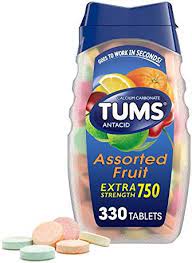
Who hasn’t taken Tums for the tummy? On our bus ride from the boat to the Gateway Arch in downtown St. Louis, and not in the best-looking part of town, we passed a 5-story red brick factory building……. the home to Tums for nearly 100 years. Everything comes from somewhere and Tums come from St. Louis, Missouri. Here’s a bit from their website:
Insomniac snacks, car crashes, tax audits, pink slips… Imagine all the gushes of gastric acid those Tums have neutralized. The brand leads the industry, selling more than 60 million bottles or rolls a year—almost double the total of its second-place rival, Rolaids. And 99.9 percent of those Tums, more than 6 billion tablets, are made right here. (The .1 percent? Wrafton Laboratories in England.)
Now you’re ready to be a Jeopardy champion!
Here’s another bit of trivia for you:
When did hurricanes start getting named? It was back in 1950 when the U.S. Weather Bureau began using the phonetic alphabet (Able-Baker-Charlie). In 1953, women’s names were substituted and in 1979 the World Meteorological Organization switched to a list that included men’s names. Now you know.
Minding the many, many vessels going up and down the Mississippi River is a huge challenge. There would be total chaos were it not for rules. I learned about two interesting websites to learn more about these rules and thought you might want to check them out too. First was www.MarineVesselTraffic.com. From an opening menu, you do a search for a specific ship (where it is), sea ports, military ships and planes tracking, container ports, cruise ships and more. Quite interesting if that’s your thing.
I also learned that while the U.S. Corps of Engineers is charged with keeping the river open and safe for traffic, the U.S. Coast Guard has charge of the ships. The National Vessel Movement Center is a fairly new organization, functioning since 2001. At this website, you can learn the rules and regulations concerning the ships using the Mississippi River (and they fill volumes).